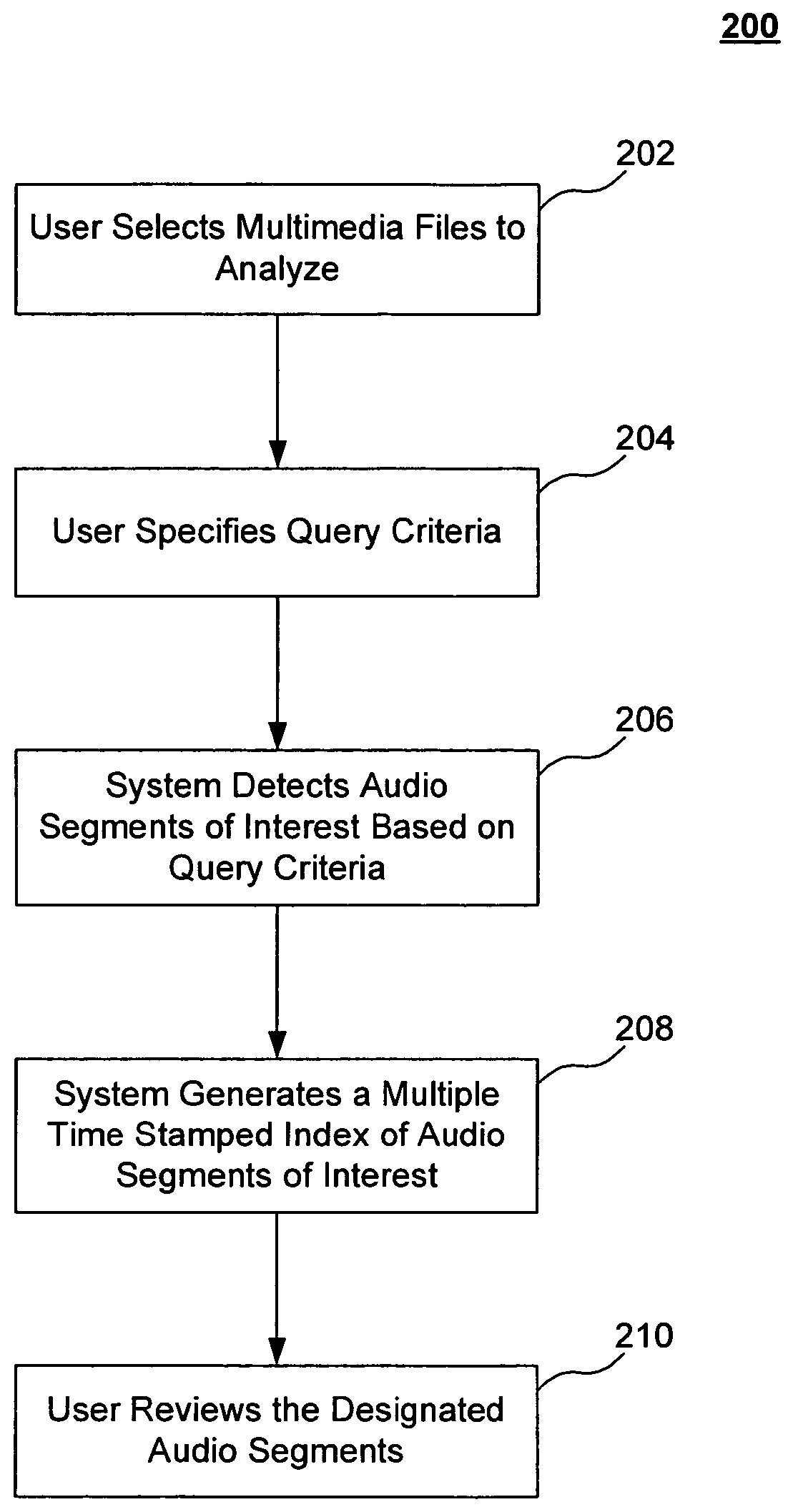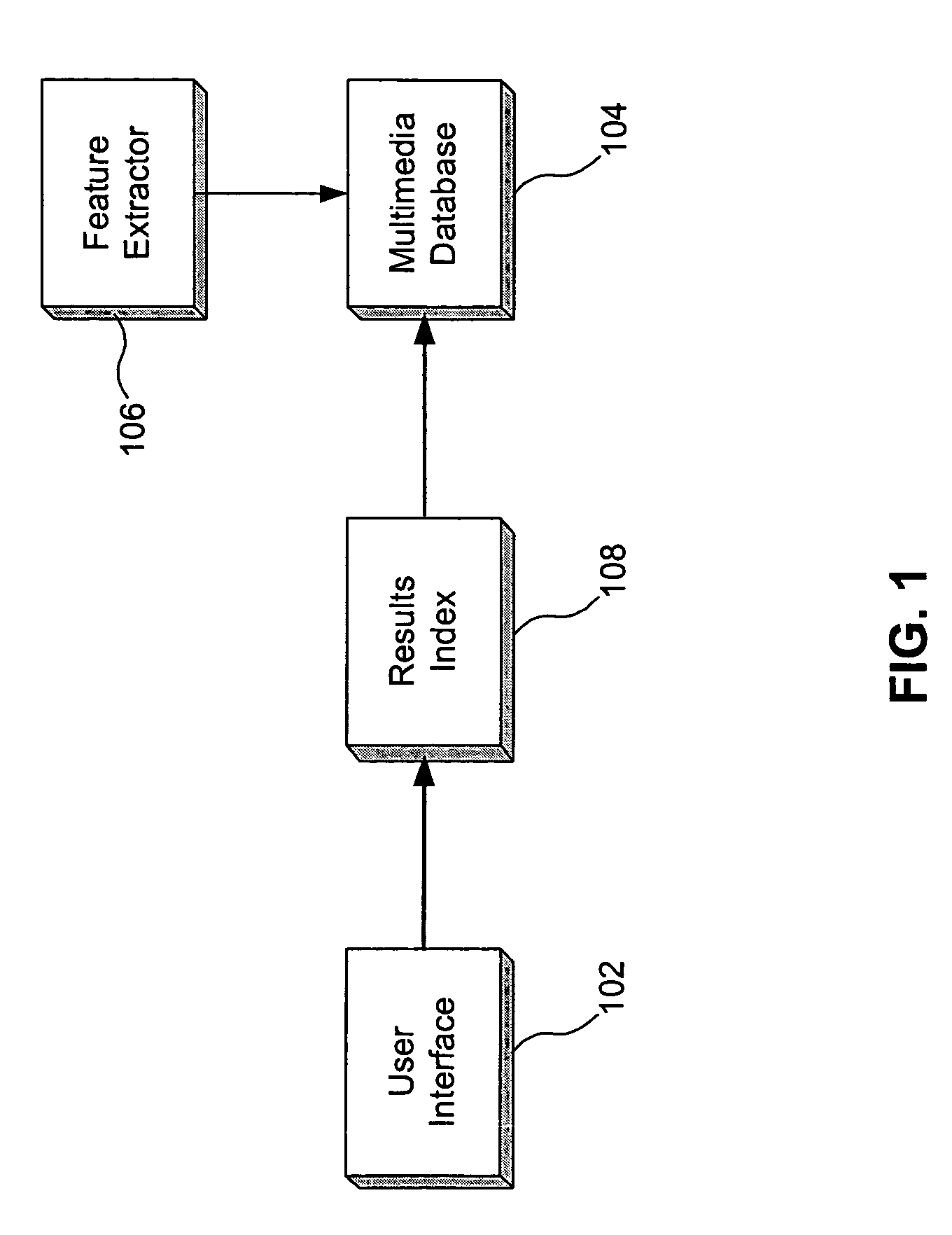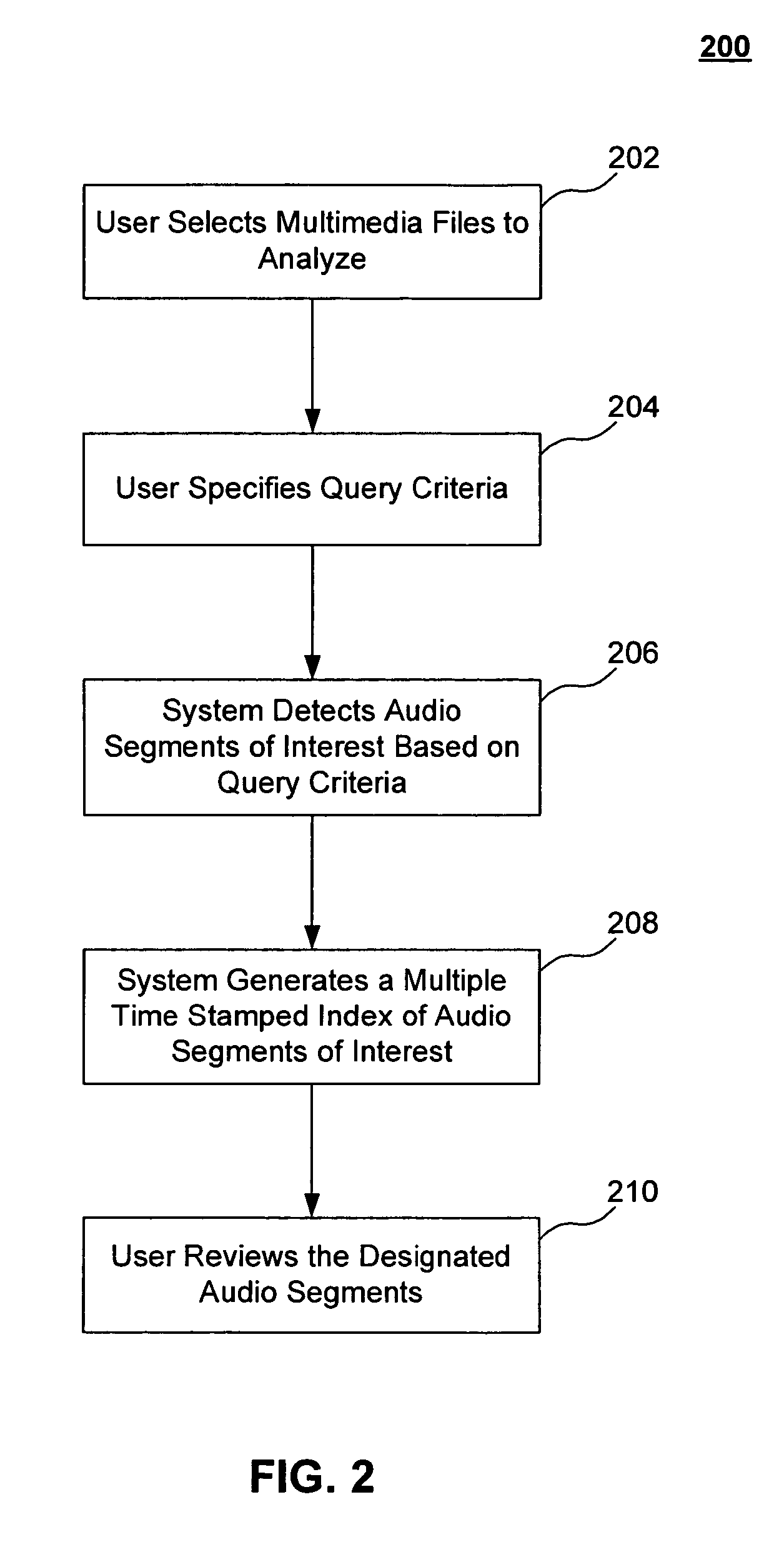System and method for audio hot spotting
a technology for hot spotting and audio, applied in the field of speech technology application and audio information retrieval, can solve the problems of false negatives and false positives, the inability to accurately detect and retrieve information from audio files, and the difficulty of multimedia files exacerbated by these difficulties
- Summary
- Abstract
- Description
- Claims
- Application Information
AI Technical Summary
Benefits of technology
Problems solved by technology
Method used
Image
Examples
Embodiment Construction
[0022]Reference will now be made in detail to the preferred embodiments of the present invention, examples of which are illustrated in the accompanying drawings.
[0023]A proposed system leverages, enhances and integrates multiple speech technologies with audio-specific information detection to provide rapid indexing and retrieval. Specifically, the system allows an analyst to specify query criteria based on multiple lexical and non-lexical features of interest. The specified audio features of interest are then located within a set of multimedia files specified for analysis. The multiple audio segments of interest, each of which contains one or more detected audio features of interest, are then indexed and provided to the analyst. The analyst can then review the audio segments of interest to quickly dissect and examine the contents and context of selected multimedia files.
[0024]The system described herein also allows an analyst to examine the contents of a multimedia file according to...
PUM
 Login to View More
Login to View More Abstract
Description
Claims
Application Information
 Login to View More
Login to View More - R&D
- Intellectual Property
- Life Sciences
- Materials
- Tech Scout
- Unparalleled Data Quality
- Higher Quality Content
- 60% Fewer Hallucinations
Browse by: Latest US Patents, China's latest patents, Technical Efficacy Thesaurus, Application Domain, Technology Topic, Popular Technical Reports.
© 2025 PatSnap. All rights reserved.Legal|Privacy policy|Modern Slavery Act Transparency Statement|Sitemap|About US| Contact US: help@patsnap.com



